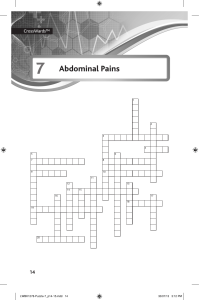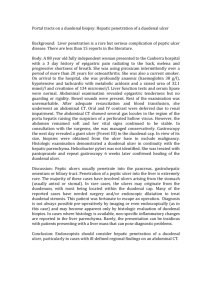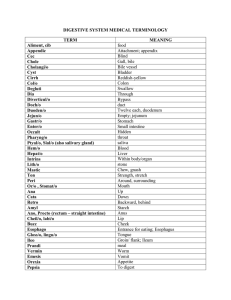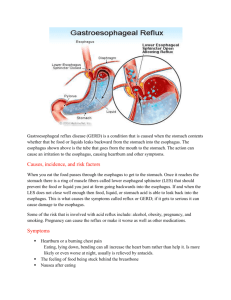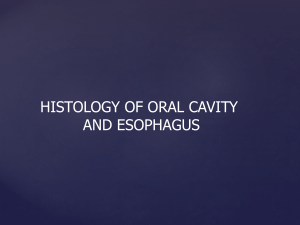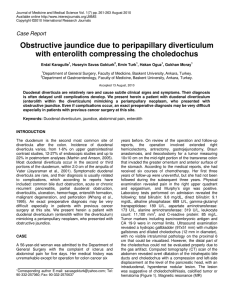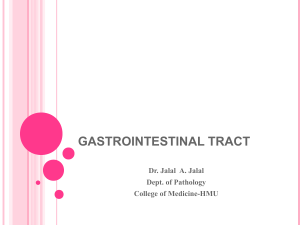Harvard-MIT Division of Health Sciences and Technology HST.121: Gastroenterology, Fall 2005
advertisement
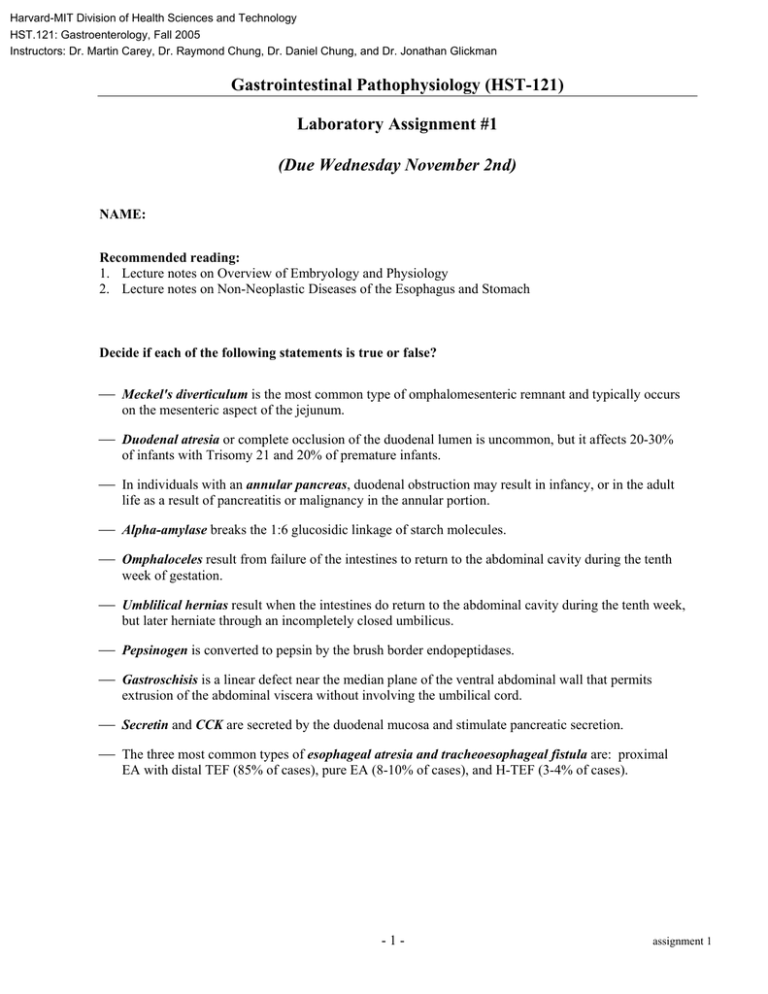
Harvard-MIT Division of Health Sciences and Technology HST.121: Gastroenterology, Fall 2005 Instructors: Dr. Martin Carey, Dr. Raymond Chung, Dr. Daniel Chung, and Dr. Jonathan Glickman Gastrointestinal Pathophysiology (HST-121) Laboratory Assignment #1 (Due Wednesday November 2nd) NAME: Recommended reading: 1. Lecture notes on Overview of Embryology and Physiology 2. Lecture notes on Non-Neoplastic Diseases of the Esophagus and Stomach Decide if each of the following statements is true or false? ⎯ Meckel's diverticulum is the most common type of omphalomesenteric remnant and typically occurs on the mesenteric aspect of the jejunum. ⎯ Duodenal atresia or complete occlusion of the duodenal lumen is uncommon, but it affects 20-30% of infants with Trisomy 21 and 20% of premature infants. ⎯ In individuals with an annular pancreas, duodenal obstruction may result in infancy, or in the adult life as a result of pancreatitis or malignancy in the annular portion. ⎯ Alpha-amylase breaks the 1:6 glucosidic linkage of starch molecules. ⎯ Omphaloceles result from failure of the intestines to return to the abdominal cavity during the tenth week of gestation. ⎯ Umblilical hernias result when the intestines do return to the abdominal cavity during the tenth week, but later herniate through an incompletely closed umbilicus. ⎯ Pepsinogen is converted to pepsin by the brush border endopeptidases. ⎯ Gastroschisis is a linear defect near the median plane of the ventral abdominal wall that permits extrusion of the abdominal viscera without involving the umbilical cord. ⎯ Secretin and CCK are secreted by the duodenal mucosa and stimulate pancreatic secretion. ⎯ The three most common types of esophageal atresia and tracheoesophageal fistula are: proximal EA with distal TEF (85% of cases), pure EA (8-10% of cases), and H-TEF (3-4% of cases). -1- assignment 1 Gastrointestinal Pathophysiology (HST-121) Case 1: The microscopic slide labeled GI-1 shows a histological section from the distal esophagus of a 65-year-old man with long-standing history of heart-burn.1 1A) What epithelial cell type present in this section does not belong to normal esophagus or stomach? 1B) Why was this man's esophagus and proximal stomach resected? Case 2: Scan the microscopic slide labeled GI-3 under low magnification. Compare the veins with the relatively normal esophageal veins in the slide labeled GI-1. 2A) What is your diagnosis? (two words only!) 2B) Which of the following is the most likely clinical history for the patient from whom this specimen was obtained? ⎯ ⎯ ⎯ 55-year-old man with long-standing gastroesophageal reflux disease 40-year-old woman with hemophilia 45-year-old man with long-standing history of alcohol abuse and abnormal liver function tests Case 3: The microscopic slide labeled GI-5 is a section of stomach with a large gastric ulcer. 3A) Focus on the ulcer and the underlying tissue under the microscope. Why do gastric ulcers bleed and present with melena and/or "coffee ground" emesis? 3B) Focus on the surrounding mucosa and fill in the correct sentence below: The ulcer is located in the antrum because of the presence of ______________cells in the mucosa. The ulcer is located in the corpus because of the presence of ______________ cells in the mucosa. 1 All HST-121 glass slides are available in small white boxes in the HST Skills area. -2- assignment 1
